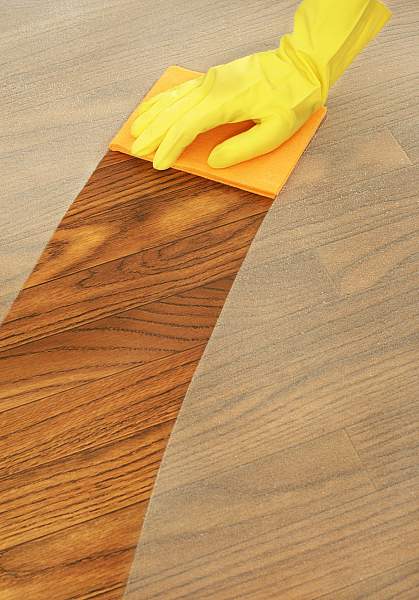You are here
October 22, 2012
Bacterial Protein in House Dust May Spur Asthma

A bacterial protein in common house dust may worsen allergies that could lead to asthma, according to a new report. The finding gives insight into the link between allergic asthma and the environment.
Asthma is caused by swelling and inflammation of the airways. When airways narrow, less air gets through to the lungs, causing wheezing, coughing, chest tightness and trouble breathing. Asthma can be triggered by allergy-causing substances in the environment called allergens. Indoor allergens from dust mites, cockroaches, dogs, cats, rodents, molds and fungi been linked to asthma.
Previous studies in mice have found that house dust extracts can promote asthma-like responses to inhaled proteins that normally wouldn’t trigger allergic reactions. A research team led by Dr. Donald Cook of NIH's National Institute of Environmental Health Sciences (NIEHS) set out to explore whether microbial products in house dust might trigger these asthma-like responses. Their study appeared online on October 14, 2012, in Nature Medicine.
The scientists used an innocuous protein called ovalbumin for their screen. Mice inhaling either ovalbumin alone or any of a series of microbial products alone didn’t have airway reactions. However, when given together, certain products caused some mice to become sensitized to ovalbumin and develop airway inflammation when later exposed.
The scientists saw particularly strong allergic airway responses in mice receiving ovalbumin together with a bacterial protein called flagellin. Flagellin is a major component of structures called flagella that certain bacteria have on their surfaces. The mice displayed all the common symptoms of allergic asthma, including more mucus production, airway obstruction and airway inflammation.
Past studies have shown that a specific immune system receptor called Toll-like receptor 5 (TLR5) recognizes flagellin. TLR5 helps detect bacteria and activate a branch of the immune system called the innate immune system. The researchers explored how mice lacking the gene for TLR5 reacted in their inhalation tests. They found that both flagellin and house dust extracts primed weaker allergic airway responses in these mice than in mice that had the gene for TLR5. The results suggest that flagellin, through TLR5, may prime the immune system to react to allergens in house dust.
The researchers tested house dust extracts for flagellin and detected significant amounts of the protein. They also discovered that people with asthma have higher levels of antibodies against flagellin in their blood than people without asthma.
“All of these data suggest that flagellin in common house dust can promote allergic asthma by priming allergic responses to common indoor allergens,” says co-author Dr. Darryl Zeldin of NIEHS.
"More work will be required to confirm our conclusions, but it's possible that cleaning can reduce the amount of house dust in general, and flagellated bacteria in particular, to reduce the incidence of allergic asthma," Cook says.
Related Links
- Household Molds Linked to Childhood Asthma
- Increased Allergen Levels in Homes Linked to Asthma
- Gut Bacteria May Influence Metabolic Syndrome
- Asthma and Its Environmental Triggers
- What is Asthma?
References: Nat Med. 2012 Oct 14. doi: 10.1038/nm.2920. [Epub ahead of print]. PMID: 23064463.
